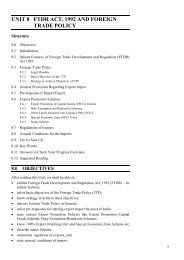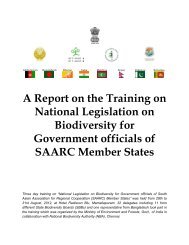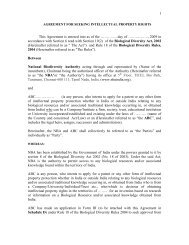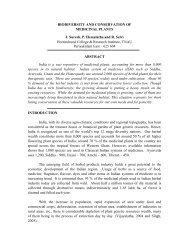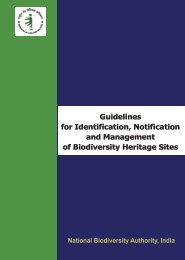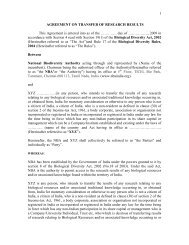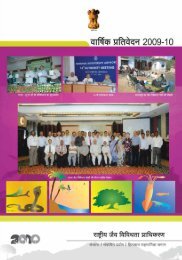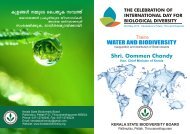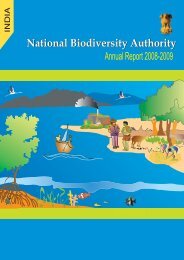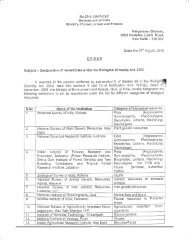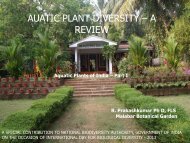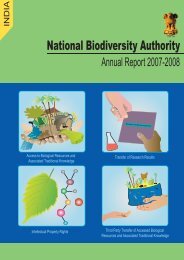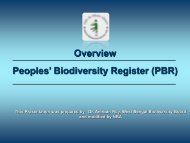BCIL BOOK.pmd - National Biodiversity Authority
BCIL BOOK.pmd - National Biodiversity Authority
BCIL BOOK.pmd - National Biodiversity Authority
You also want an ePaper? Increase the reach of your titles
YUMPU automatically turns print PDFs into web optimized ePapers that Google loves.
NATIONAL BIODIVERSITY ACTION PLAN<br />
because of the lack of expertise on specific groups,<br />
lack of resources to work on groups having only<br />
scientific importance, lack of coordination in<br />
exchanging data, and lack of proper technology in<br />
culturing/growing the organisms.<br />
It is evident that the taxonomists are ageing and<br />
declining in number and there is insufficient expertise<br />
in identification of several groups of organisms mainly<br />
because of failure in transferring the capacity in<br />
taxonomic identification to the next generation.<br />
Similarly, the frontline forestry staff requires training<br />
for equipping them for undertaking research and<br />
monitoring activities.<br />
India has a strong base of indigenous knowledge<br />
on various aspects of biodiversity including that of<br />
coastal and marine biodiversity. This traditional<br />
knowledge has to be scientifically validated through<br />
screening of biological diversity for commercially<br />
valuable products, so as to make bio-prospecting useful<br />
and effective. Department of AYUSH through its<br />
research councils is undertaking validation of<br />
traditional systems of medicines.<br />
Our understanding of the underlying causes of the<br />
loss of biodiversity is incomplete as is the assessment<br />
of the consequences of such a loss for the functioning<br />
of ecosystems. Available data does not help in<br />
unequivocally establishing cause-effect relationships.<br />
There is also a lack of any widely accepted indicator(s)<br />
of biodiversity. We need to strengthen institutional<br />
framework and human capacity to generate new<br />
knowledge, create greater awareness on the linkages<br />
of biodiversity with other components of our lifesupport<br />
system, and apply scientific solutions to the<br />
problem of erosion of species and genetic diversity.<br />
The loss is allied with increasing human demands and<br />
decreasing productivity in ecosystems.<br />
3.7 New and emerging biotechnologies<br />
Development and introduction of transgenic or<br />
genetically modified organisms (GMOs), developed<br />
through the use of r-DNA technology , are already in<br />
the process of revolutionising all facets of human life,<br />
be it agriculture, industry or health care. Significant<br />
investments in biotechnology research have been made<br />
in India and many research projects are at advanced<br />
stages of development. About 20 recombinant<br />
therapeutics and a transgenic crop, Bt cotton, have<br />
already been approved for commercial use in the<br />
country. The area under Bt cotton cultivation has<br />
increased substantially in the last six years. Further,<br />
16



